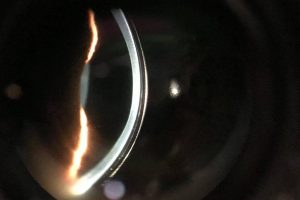Excess fluid inside the eye can lead to sight-threatening eye diseases— making early diagnosis absolutely vital.
Collagen, water and protein are the primary materials that make up the eye — but sometimes, a surplus of fluid can accumulate inside the eye, increasing the risk of serious eye diseases.
Increased fluid inside the eye leads to serious conditions including glaucoma and macular edema.
Why is there fluid inside the eye?
There are two different types of fluid that are found inside the eye:
- Retinal blood vessels are thin and fragile blood vessels that supply the essential oxygen and nutrients to the nerves in the back of the eye. These nerves carry the visual signals from the eyes to the brain.
- Aqueous humor is a watery, transparent fluid that fills the anterior space between the cornea in the front of the eye and the structures in the middle of the eye. The aqueous humor delivers fresh oxygen to the cornea and removes its waste products by flowing out the eye into the veins at the back of the eye.
Excess fluid of either type can lead to serious sight-threatening eye conditions, making prompt diagnosis and treatment crucial.
Which conditions are caused by excess fluid?
A range of eye conditions can be caused by excess fluid inside the eye, including:
- Wet macular degeneration
- Glaucoma
- Macular edema
- Diabetic macular edema
- Central serous retinopathy
Wet macular degeneration
A sudden increase in fluid on the macula causes wet macular degeneration.
This generally occurs as a result of abnormal blood vessel growth in the retina.
These abnormal blood vessels leak blood and fluid into the retina and macula, causing damage and central vision loss.
Glaucoma
Glaucoma occurs as a result of the aqueous humor fluid building up inside the eye, caused by a blockage within the eye’s internal drainage system.
Fluid buildup inside the eye causes the pressure inside the eye to rise. When eye pressure remains high over a period of time, the constant pressure presses on the optic nerve, causing permanent damage and vision loss.
Schedule an eye exam with an eye doctor near you to protect your eye health and vision.
SEE RELATED: 9 Ways Your Eyes are a Window to Your Health
Macular edema
Macular edema occurs when damaged blood vessels in the retina cause fluid build up in the macula.
The swelling of the macula is caused by the fluid leakage of plasma or blood from damaged retinal blood vessels. Excess macular fluid often results in blurred or wavy vision in the central visual field.
Diabetic macular edema
Diabetic macular edema is a complication of diabetic retinopathy that causes fluid or blood to leak into the retina.
Diabetic macular edema often results in blurred or double vision and black spots in the central visual field.
Central serous retinopathy
Central serous retinopathy occurs from fluid accumulation underneath the retina caused by leaking blood vessels in the choroid, the space beneath the retina.
Central serous retinopathy often causes dimmed, distorted or blurred vision, and straight lines to appear crooked or bent.
When fluid builds up behind the retina, the risk of retinal detachment and vision loss increases.
How is excess fluid inside the eye treated?
Treatment for excess fluid inside the eye involves treating the underlying cause of the fluid buildup.
For retinal diseases, anti-VEGF injections, laser treatments or surgery are recommended to stop abnormal blood vessel growth.
For glaucoma, medicated eye drops are generally prescribed to reduce the pressure within the eye. In some cases, medications or surgery may be required to improve fluid drainage.
LEARN MORE: Guide to Eye Health
If you notice any changes to your vision, contact an eye doctor near you for an eye exam.
Frequent eye examinations can help you maintain your eye health and vision, and help your doctor to identify early signs of eye disease.










